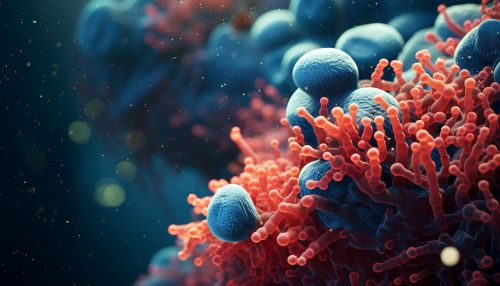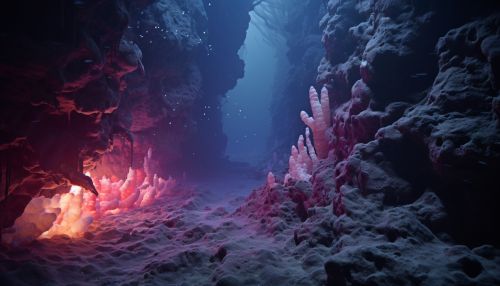Chemosynthesis
Overview
Chemosynthesis is a process by which certain organisms, such as bacteria and archaea, convert inorganic compounds into organic matter using energy derived from reactions involving inorganic chemicals, typically in the absence of sunlight. This process is in contrast to photosynthesis, where energy from sunlight is used to convert carbon dioxide and water into glucose and oxygen.


Process
The process of chemosynthesis begins when an organism, often a bacterium or archaeon, oxidizes an inorganic substance such as hydrogen sulfide or methane, releasing energy. This energy is then used to convert carbon dioxide or methane into organic compounds, which serve as nutrients for the organism. The process can occur in extreme environments, such as deep-sea hydrothermal vents, where sunlight is not available.
Types of Chemosynthesis
There are several types of chemosynthesis, including hydrogen sulfide chemosynthesis, methane chemosynthesis, and nitrogen chemosynthesis. Each type is characterized by the specific inorganic compound that is oxidized and the organic compound that is produced.
Hydrogen Sulfide Chemosynthesis
In hydrogen sulfide chemosynthesis, bacteria oxidize hydrogen sulfide (H2S), producing sulfur as a byproduct. The energy released during this reaction is used to convert carbon dioxide into organic compounds.
Methane Chemosynthesis
In methane chemosynthesis, methane (CH4) is oxidized to produce methanol, which is then used to create organic compounds. This process is often found in methane seeps on the ocean floor.
Nitrogen Chemosynthesis
In nitrogen chemosynthesis, bacteria convert nitrogen gas (N2) into ammonia (NH3), which is then used to create organic compounds. This process is important in nitrogen-poor environments.
Role in the Biosphere
Chemosynthesis plays a crucial role in the biosphere, particularly in environments where sunlight is not available, such as deep-sea hydrothermal vents, cold seeps, and anoxic sediments. Organisms that use chemosynthesis, known as chemosynthetic organisms or chemotrophs, form the base of the food chain in these environments, providing nutrients for other organisms.
Chemosynthetic organisms also play a significant role in the global carbon cycle. By converting inorganic carbon into organic compounds, they help to sequester carbon, reducing the amount of carbon dioxide in the atmosphere.
Chemosynthetic Organisms
Chemosynthetic organisms are typically bacteria or archaea, although some eukaryotes are also capable of chemosynthesis. These organisms are often found in extreme environments, such as deep-sea hydrothermal vents or cold seeps, where sunlight is not available.


Chemosynthesis vs Photosynthesis
While both chemosynthesis and photosynthesis are processes by which organisms convert inorganic compounds into organic matter, there are significant differences between the two. The most notable difference is the energy source: chemosynthesis uses energy from inorganic chemicals, while photosynthesis uses energy from sunlight.
